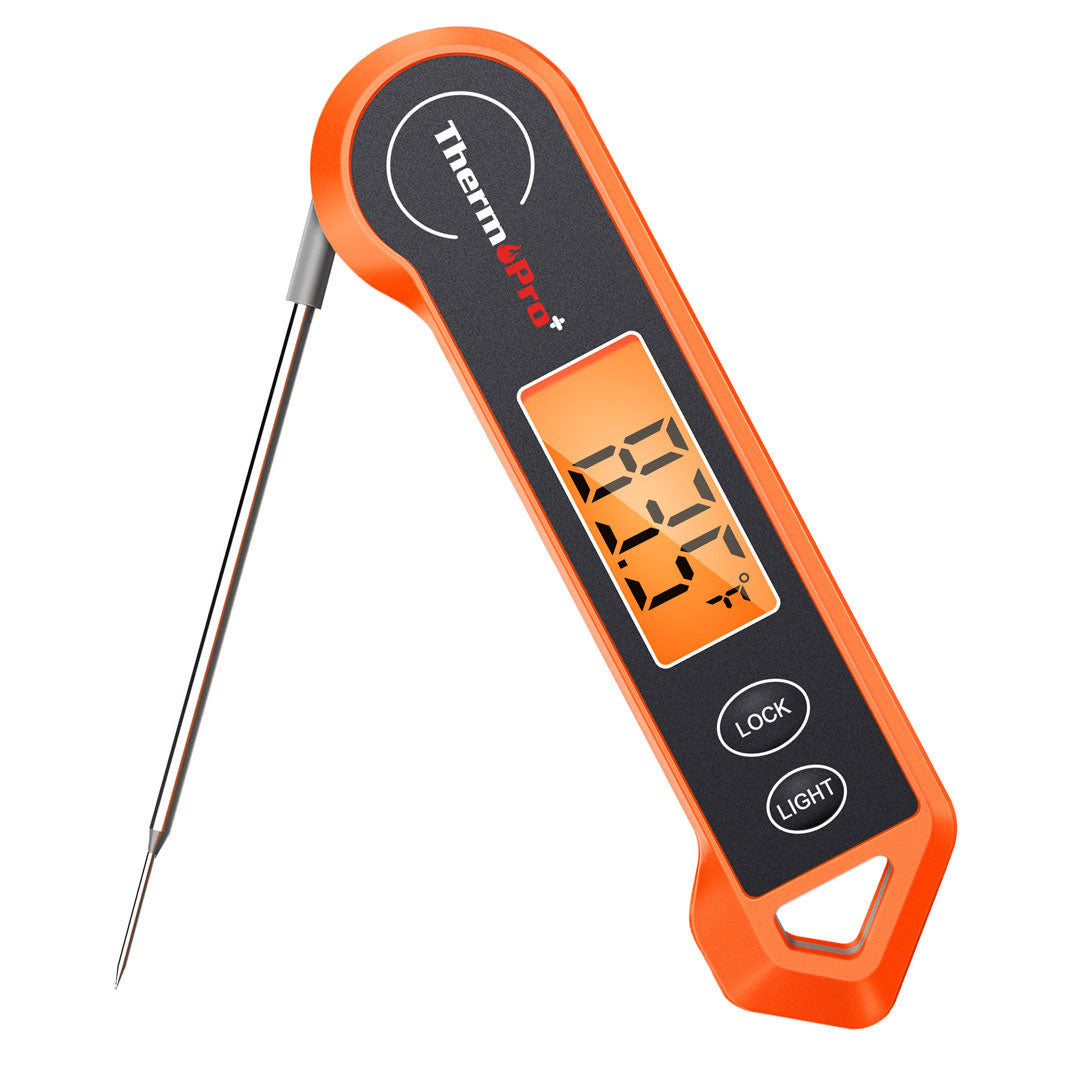Cook Salmon: How to Tell if Salmon is Fully Cooked?






 288 Comments
288 Comments
Salmon is a delicious and healthy fish that can be used in many different dishes, raw or cooked. You might be wondering: can you eat salmon raw? The short answer is: yes, but there is also an art to cook salmon that strikes a balance between tender, juicy, and flavorful while ensuring that the fish is safe to eat.
Raw vs. Cooked Salmon Fish
Some people prefer the taste and texture of raw salmon, but cooked salmon fish can be tender, moist, and flavorful and also comes with less risk of food-borne illnesses. This article is going to focus on how to cook salmon to tender perfection.
Cooking salmon is easy once you get the process right, but how exactly can you tell meat doness? When the salmon is cooked just right, it will gently flake when pressed upon gently with your finger. Overcooked salmon will be dry, light in color, and tough when eaten.

5 Mistakes to Avoid When You Cook Salmon
1. The heat is too high
When cooking this fish, you want to make sure that you have your pan at the perfect temperature. Too cool and the cooking process will result in an undesirable texture. Make sure you heat up your pan or oven to the desired temp before beginning the cooking process, as per your recipe.
2. Forgetting to take out the bones
This one can be easily overlooked, especially if you’re new to cooking fish or your recipe doesn’t mention it. But you don’t want to take the time to cook salmon fillets just to choke on a bone when you’re eating!
Many prepackaged fillets will come with the bones already removed, but if you’re using fresh fish you’ll want to make sure you take out the pin bones. Simply run your hand over the fillet and you’ll find small bones in the meat. Use tweezers to gently pluck these from your fillets.
3. Applying salt too soon
This is a no-no for most foods as salt will leach out the moisture from anything you’re cooking. The result is a rubbery, dry, unpalatable mess. In the case of salmon, you should only apply salt just before you begin cooing your fillets, and not a minute too soon! Make sure that your pan is heated through and up to temperature, then add salt to your fish right before cooking.
4. Removing the skin and cooking skin-side up
If you’re baking, grilling, or pan-searing your fillets, you’ll want to leave the skin on your fish for the ultimate result. Removing the skin makes the fish cook too quickly and in the end, your fillets will be dry. Another related mistake is putting the fish skin-side up on your cooking surface. Doing so will bring the same result as taking the skin off of your fillets. Just don’t do it!
5. The meat you’re cooking is too thick
Ideally, your salmon fillets should be a pretty uniform thickness so the meat cooks evenly. When you’re picking out your salmon, make sure that the thickest part of the fish is no larger than an inch to ensure optimal cooking.
Can You Eat Salmon Raw?
The answer is yes! As long as you can confirm your salmon was frozen according to the FDA’s freezing guidelines. Chefs recommend eating salmon medium or medium rare because it has the best flavor and texture.
4 Ways to Check Salmon Doneness
1. Examining the Color and Texture
While the salmon is still cooking, take note of how its color changes from a dark pink to a lighter color. Cooked salmon color inside will be an opaque pinkish white color on the outside and translucent pink on the inside.
If your fillet is still dark pink on the outside, it needs to cook more. If it has turned light, opaque pink on the inside it is overcooked.
2. Checking the Temperature with ThermoPro Instant Read Meat Thermometer
The easiest and most precise way to check if your fillet is done is by using a thermometer. Simply insert your ThermoPro TP622 Lightning Instant-Read Meat Thermometer into the thickest part of the fillet and wait for the results.

The temperature to cook salmon should be above 110°F but below 140°F. This is because when the fish is below 110°F, it is considered raw and above 140°F the meat will be overcooked and dry with a tough texture.
If you want your fish rare, then the 110°F to 125°F range is perfect for you. Medium rare salmon is anywhere from 125°F to 140°F is medium to well-done.
3. Use a cake tester
Another accurate way to take the temperature of your fillets is to use a cake tester. This tool is a long, thin, metal rod that is used to test the doneness of cakes. Coincidentally, it can be used for fish too! Just Insert it into the thickest part of your fillet for three seconds. Then, take the metal out and touch it on the skin beneath your bottom lip. If the rod is warm, the fish is done. If it’s cool, your fillet needs more time on the heat.
4. Butter knife method
This method is very similar to the cake tester method. Insert the butter knife into the thickest part of the fillet for five seconds, and then take it out. Immediately press it onto your lower lip and note the temperature of the knife. If it’s warm, the fish is done. If it’s not then the fish needs to cook longer.
5 Tips for Salmon Cooking Ideas
1. Leave the Skin On
When you take off the skin from your salmon, you are removing the barrier between the meat and your heat source. This increases the risk of overcooking your salmon, so leave the skin on! Another positive of leaving the skin on your fillets is that it will reduce sticking. Unless you are poaching your fillets, leave the skin on your fish as a rule.
2. Add Salt Right Before Cooking
Salt and pepper are integral to a flavorful salmon fillet, but seasoning must be done at the right time. If you add salt to your fish too early before the cooking process, you are headed for a very dry result. This is because salt draws out the moisture in the fish and if that’s not bad enough, this often leads to overcooking as well.
The solution? Heat up your pan, and when you’re sure it’s the right temperature, throw some salt and pepper on your fillets.
3. Cook Your Fillets Skin-Side Down
After you heat up your pan to the correct temp, place the salmon fillets skin-side down. This ensures that there is a barrier between the meat and the cooking surface that will slow down the cooking process.
4. Use a Kitchen Timer
A one-inch thick piece of salmon should take about eight minutes to cook. This eight-minute window will give you flaky, moist, tasty fillets. Take the guesswork out of when your salmon is fully cooked by timing your cooking process with the ThermoPro Kitchen Timer. Just set the timer as soon as the salmon hits the pan and then check your fillets when the timer goes off.
5. Practice Makes Perfecta
Cooking salmon to perfection is an art. You want it to be moist, flaky, and done, of course, but you don’t want it to be too dry. Using a timer, checking doneness with an instant-read meat thermometer, and making sure that the seasoning is applied at the right time can all be a bit much when you’re first starting out. So just remember that practice makes perfect when you’re embarking on your salmon journey.
There you go: all the tips and tricks about recipe for cooking salmon you need to make sure your salmon is cooked to perfection. Remember, checking the temperature is the most accurate way to ensure the doneness of your fish and that the best salmon will be flaky, tender, and light pink in color. Keep in mind that practice makes perfect! Enjoy your delicious salmon.
Maybe it is difficult for you to tell if the salmon was fully cooked. If you want to get help with an instant-read meat thermometer, go to Online ThermoPro Store to find a thermometer that suits you best.
Comments
You May Also Like

Best Baked Salmon Recipes: Easy Oven-Baked Salmon Ideas

Salmon Internal Temp: The Best Temp to Cook Salmon

Is Undercooked Salmon Safe to Eat?






















